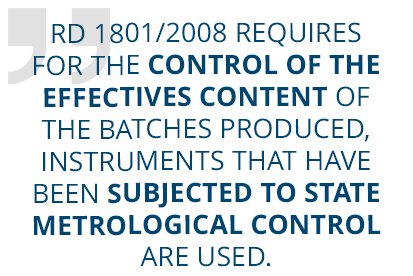Nowadays, the manufacturing processes of food and consumer products must pass numerous controls and inspections. In response to this and the current regulations in force, it is necessary to incorporate checkweighing equipment into the production lines of packaged products.
These checkweighers, also called checkweighers or automatic weighing instruments, are responsible for weighing 100% of the products on a production line automatically, to ensure that the amount of product indicated on the packaging actually corresponds to the amount of product inside. In this way, fraud is prevented and the interests of the consumer and the image of the brands are protected.
These checkweighers, also called checkweighers or automatic weighing instruments, are responsible for weighing 100% of the products on a production line automatically, to ensure that the amount of product indicated on the packaging actually corresponds to the amount of product inside. In this way, fraud is prevented and the interests of the consumer and the image of the brands are protected.










